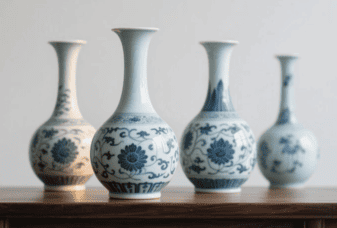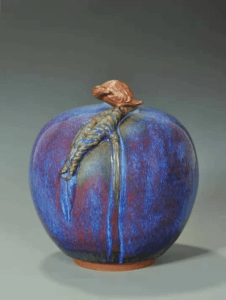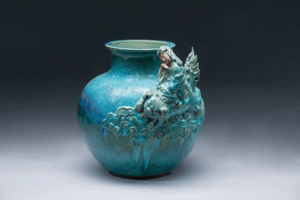Ming Chenghua Doucai Porcelain Appraisal Guide
2023 Hong Kong Sotheby’s spring auction, a Chenghua Doucai chicken bowl cup sold for 281 million Hong Kong dollars, once again confirmed the legendary status of this type of porcelain.
As the history of Chinese ceramics, “hard to find” the best, Chenghua Doucai with its elegant and elegant artistic style and exquisite porcelain production process, become the focus of collectors throughout the generations. However, the market is flooded with imitations of the status quo, also makes the identification work is full of challenges.
First, the historical code of Chenghua Doucai

Ming chenghua years (1465-1487) doucai porcelain, represents the perfect fusion of underglaze blue and glaze painting technology. The “long things” records “into the kiln to five colors for the top”, where the “five colors” is actually a synonym for doucai. Due to the Chenghua emperor’s ultimate pursuit of works of art, the Imperial Kiln Factory in the selection of raw materials, process control to reach an unprecedented level, the surviving authenticity of the National Palace on both sides of the Taiwan Strait, such as the top institutions, less than a hundred pieces of folk circulation.
Second, five core identification factors
Tire like fat and jade
Genuine carcass is made of Jingdezhen makang soil, after fine washing, showing the characteristics of “glutinous rice tire”. Transparent observation can be seen tire fine as paste, the thickness of only 0.8-1.2 mm, knocking sound like a chime. The imitations are mostly dry due to the use of modern kaolin clay, and the tires are either too thick or mechanically apparent.

Warm glaze color like morning mist
Chenghua original “lard white” glaze, is the key to identification. Genuine glaze thickness of about 0.1-0.3 millimeters, the surface can be seen small orange peel lines, in 45 degrees sidelight pan lake green color. Imitations are often due to glaze formula differences, showing blinding white light or dull milky feeling.
Color Material Characteristics
Blue and white: equal green material hair color is light and elegant, brush strokes have varying shades of “cloud cover” effect
Alum red: like ripe cherries like jujube skin red, touch with a fine grain feeling
Purple: a special purple color unique to Chenghua, as red as iron and without luster.
Yellow color: chicken oil yellow with beeswax luster, very different from the later bright yellow.
Decorative brushwork
Genuine decorative lines are as fine as silk but elastic, and the color filling is precise and does not cross the line. Take the classic chicken bowl cup as an example, the rooster feathers using “double hook fill color” technique, the tail feathers can be seen at the fine hair-like brush strokes. Imitations often due to the roughness of the painting work appears stiff lines, fill color overflow and other issues.
Recognition of the mystery
“Daming Chenghua year system” six characters in regular script is unique:
Script structure: “big” character short down long, “into” character fifth straight apostrophe
Characteristics of the writing: the strokes are hidden but not exposed, seemingly written with a bald brush
Arrangement: outer blue and white double circle, approximately 2.8 centimeters in diameter
Glaze features: the glaze is slightly concave at the mark, and a sense of sinking is visible in the side light.
Common faults of imitations

Tire and glaze incongruity: modern imitations mostly use slurry molding, the density of the tire body is too high, in stark contrast to the thin and light translucent genuine products.
Color chemical traces: the use of cobalt oxide blending of blue and white color is too bright, the spectral detection can be found in modern chemical composition
Aging traces of counterfeiting: artificially aged cowhair pattern distribution pattern, and the natural formation of the “fly wing” open piece of significant differences
Misalignment of the era of decoration: often appear in the Qing Dynasty only appeared Tangzhi lotus pattern or KangXi style landscape pattern
Collection Suggestions
For ordinary collectors, it is recommended to start from the porcelain specimens, through a magnifying glass to observe the natural aging traces of the combination of tire glaze. In recent years, the error of thermoluminescence detection technology has been reduced to ± 40 years, with X fluorescence spectrometer composition analysis, can significantly improve the accuracy of identification. Special attention should be paid to those “orderly circulation” but the lack of scientific testing to prove that the “famous”.
